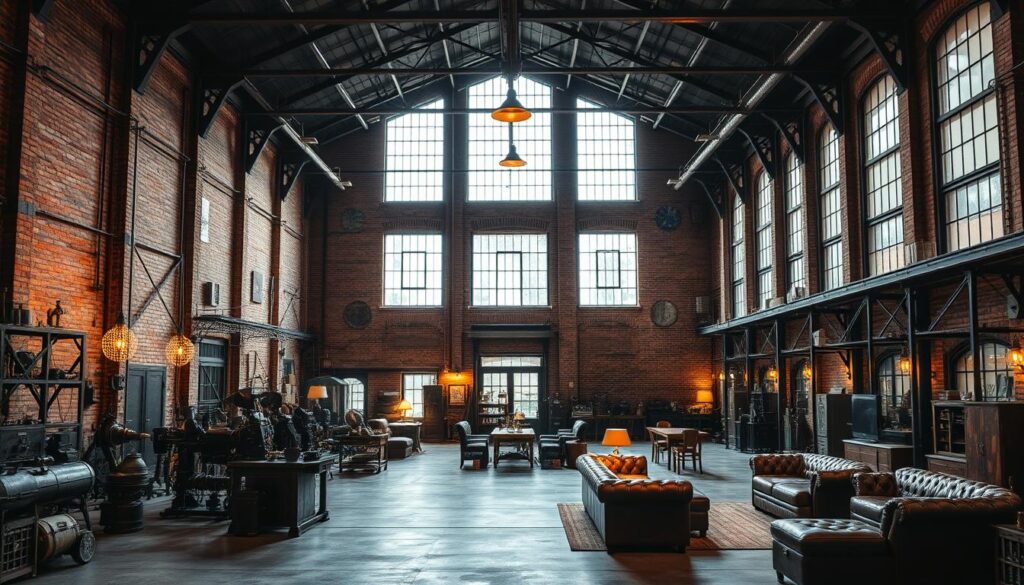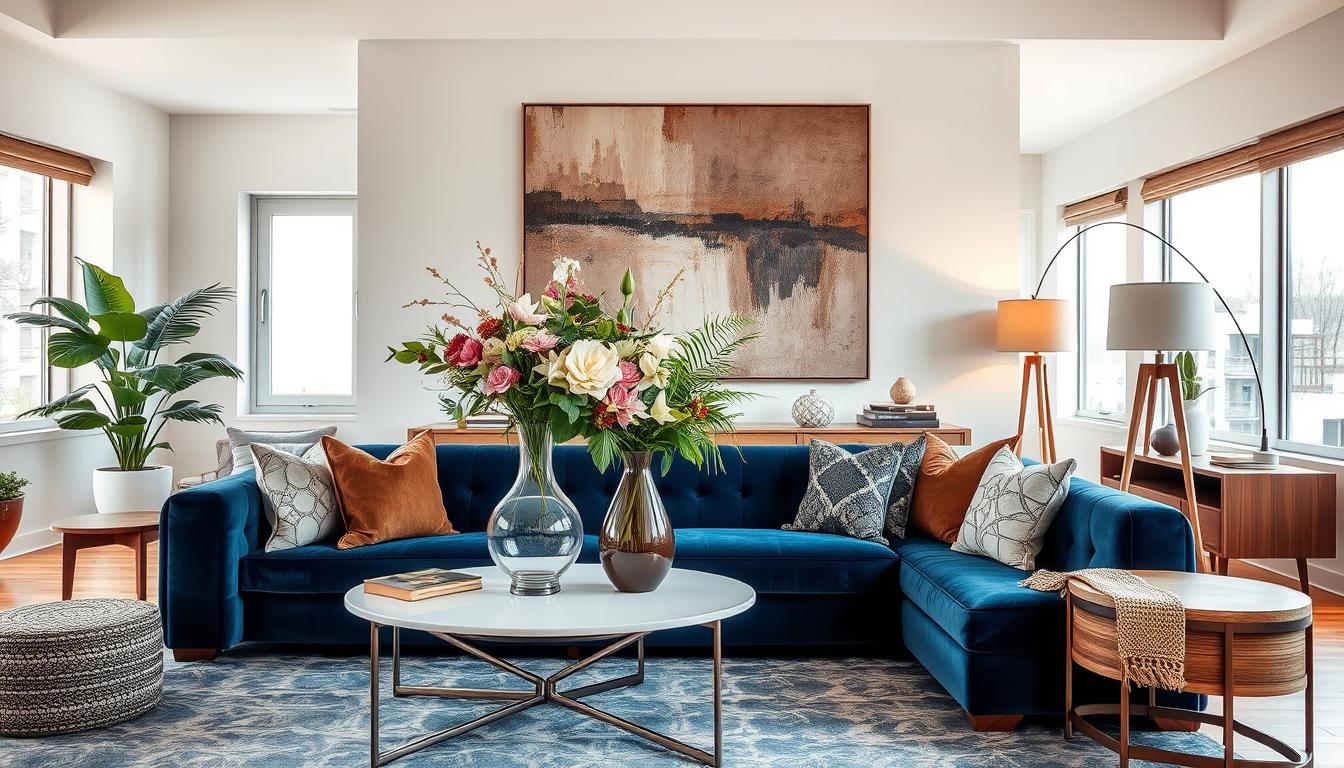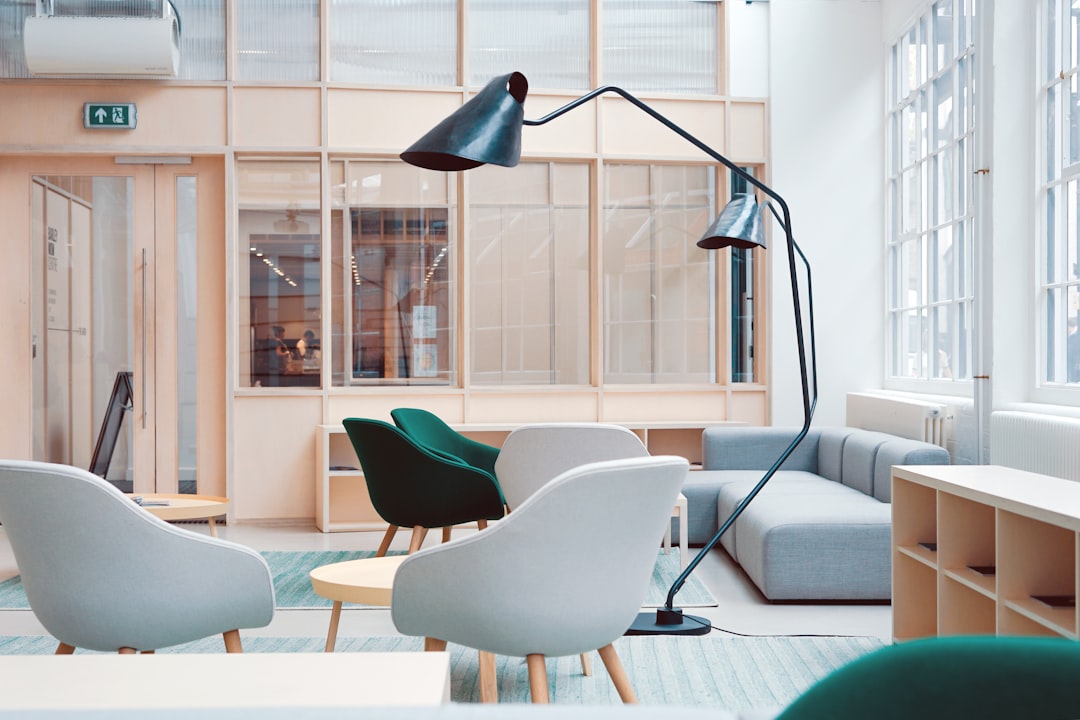Did you know a well-designed home can boost its value by up to 10%? Exploring interior design decorating styles shows how important it is to keep up with home decor trends. This is key for homeowners wanting to improve their homes.
Choosing the right style can be tough. We’ll look at different trendy styles. You’ll learn how to add them to your home, from modern to bohemian.
Key Takeaways
- Understanding the basics of interior design styles is essential.
- Modern and bohemian styles are among the trending decorating styles.
- Incorporating the latest home decor trends can enhance our living spaces.
- Staying updated on interior design decorating styles can increase home value.
- Various styles can be mixed and matched to create a unique look.
Understanding Interior Design Styles
Interior design styles help us decorate our homes. They guide us to create a space that looks good and feels right. With many styles to pick from, knowing what each one is about is key.
What Are Interior Design Styles?
Interior design styles mix furniture, colors, and decor to set a space’s look. They draw from history, culture, or place. For example, contemporary design focuses on simplicity and function.
Styles can make a space feel different. Traditional interiors use classic pieces and warm colors for a cozy feel.
Importance of Choosing a Style
Picking the right style for our home is important. It affects how our space looks and feels. A good style can make our home more comfortable and relaxing.
Let’s look at some popular styles and what makes them unique:
| Style | Key Characteristics | Typical Features |
|---|---|---|
| Contemporary | Clean lines, minimal ornamentation, emphasis on functionality | Neutral color palette, sleek furniture, open spaces |
| Traditional | Classic furnishings, rich colors, ornate details | Warm wood tones, patterned fabrics, decorative accessories |
| Modern | Emphasis on functionality, simplicity, and innovative materials | Bold color choices, unique furniture designs, cutting-edge technology |
Knowing about different styles helps us decorate better. Whether we like traditional or contemporary, choosing a style that fits us is crucial. It makes our home truly ours.
Modern Interior Design
Modern interior design is all about blending function and beauty. It’s known for its simplicity, clean lines, and less decoration. This style focuses on being useful and often uses neutral colors with bold accents.
Key Characteristics of Modern Design
Modern design stands out in several ways. These include:
- Clean Lines: It often has straight lines and few curves.
- Minimal Ornamentation: It values simplicity, cutting down on extra decorations.
- Functionality: Every item is chosen for its usefulness, making the space better.
Popular Color Palettes
Modern decor often starts with a neutral base. Then, it adds bold colors for interest. Some favorite color schemes are:
| Color Palette | Description | Example Colors |
|---|---|---|
| Monochromatic | Uses different shades of one color for a unified look. | Shades of white, beige, and gray. |
| Neutral with a Pop of Color | Mixes neutral colors with a bold accent. | Gray walls with yellow furniture. |
| Bold and Bright | Uses vibrant colors for a lively feel. | Red, orange, and yellow. |
Furniture Choices
In modern design, furniture is picked for its usefulness, simplicity, and clean look. Some top picks are:
- Sleek Sofas: Low-profile sofas with simple lines and little padding.
- Minimalist Coffee Tables: Simple, low coffee tables that act as a central piece.
- Geometric Lighting: Lighting with geometric shapes and clean designs.
By using these elements, we can make a modern space that looks great and works well. It’s perfect for those who love simplicity and value function.
Traditional Interior Design
Traditional interior design is known for its rich colors and detailed patterns. It’s a favorite for those wanting a cozy yet sophisticated home. This style draws from history, making spaces warm and inviting.
Defining Features of Traditional Style
Traditional design stands out with rich wood tones, intricate patterns, and classic furniture. These elements blend to create a cozy and welcoming space.
- Classic furniture silhouettes
- Ornate detailing
- Rich color palettes
Interior design expert notes, “Traditional design aims to bring warmth and comfort. It uses familiar, classic elements.”
“The key to traditional design is in its ability to evoke a sense of history and timelessness.”
Color Schemes and Fabrics
Traditional design often uses warm, rich colors like deep reds and golden yellows. These colors are paired with detailed fabrics like velvet, silk, and linen. These add depth and texture.
| Color | Fabric | Effect |
|---|---|---|
| Deep Reds | Velvet | Creates a cozy atmosphere |
| Golden Yellows | Silk | Adds warmth and elegance |
Incorporating Antique Elements
Adding antique elements is key in traditional design. These pieces bring character and history to a home.
We can add antique elements with vintage furniture, antique rugs, and classic decor. For instance, an antique armchair can be a room’s centerpiece. It adds elegance and history.
By carefully adding these elements, we can make a traditional interior that’s both timeless and welcoming.
Contemporary Interior Design
The world of contemporary interior design is always changing. It focuses on what’s new and popular. This style keeps getting updated with new tech, materials, and looks.
Differences Between Modern and Contemporary
Many people get modern and contemporary interior design mixed up. Modern design is from a specific time and has a certain look. Modern design is from the early to mid-20th century, with clean lines and less decoration.
On the other hand, contemporary design is all about today’s trends. It includes many different styles and influences.
Trendy Textures and Materials
Today’s interiors mix different textures and materials for a rich look. Some popular ones are:
- Smooth, matte finishes
- Reclaimed wood for warmth
- Metallic accents for a modern look
These materials add depth and a modern feel to a room. The trick is to mix them in a way that looks good and feels right.
Integration of Technology
Technology is a big part of contemporary design. Smart home features like automated lights and temperature control are getting more common. They make our homes more comfortable, efficient, and connected.
For example, smart lights can change color or brightness based on the time or activity. Voice-controlled assistants also make it easier to control our homes, making life simpler.
Rustic Interior Design
The rustic style celebrates natural elements to make spaces warm and welcoming. It’s all about embracing the simplicity of rural living, bringing the outdoors inside.
Elements of Rustic Charm
Rustic design uses natural materials like wood, stone, and earthy colors. These elements create a cozy, inviting atmosphere that feels connected to nature. Key elements include:
- Reclaimed or distressed wood for furniture and flooring
- Stone or brick walls and fireplaces
- Earthy color palettes, including shades of green, brown, and beige
- Natural textiles, such as woven baskets and jute rugs
Best Wood Finishes
The right wood finish can greatly change a rustic space’s look and feel. Popular options include:
- Distressed or reclaimed wood for a vintage, weathered look
- Natural wax or oil finishes to enhance the wood’s natural texture
- Weathered or whitewashed wood for a softer, more subtle appearance
Nature-Inspired Decor Ideas
Adding nature-inspired decor can enhance a rustic space’s character. Ideas include:
- Using natural elements, such as pinecones, branches, and rocks, as decorative accents
- Incorporating plants or a living wall to bring in a touch of greenery
- Displaying nature-inspired artwork or prints
| Decor Element | Description | Example |
|---|---|---|
| Reclaimed Wood | Distressed or vintage wood used for furniture or flooring | Reclaimed oak flooring |
| Natural Textiles | Woven baskets, jute rugs, and other natural fibers | Jute rug in a neutral color |
| Stone Accents | Stone or brick used for walls, fireplaces, or decorative features | Stone fireplace surround |
By using these elements, we can make a rustic space warm, inviting, and connected to nature. Whether it’s a cozy cabin or a rustic chic home, this style brings the outdoors in.
Industrial Interior Design
Industrial interior design mixes modern decor with an eclectic style. It comes from the industrial era and is now popular for adding an urban feel to homes.

Characteristics of Industrial Style
Industrial design has a raw, unfinished look. It features exposed brick, metal beams, and reclaimed wood. These elements give a unique, rugged yet sophisticated look.
Exposed structural elements like ductwork and concrete floors add to the industrial vibe. This style loves raw materials and the charm of handmade or vintage items.
- Exposed brick and concrete
- Metal accents and reclaimed wood
- Visible ductwork and pipes
The Role of Open Spaces
Open spaces are key in industrial design. By removing walls, homes feel spacious and open. This openness lets in large windows and high ceilings, making the space look better.
To get this look, we can remove unnecessary partitions and pick furniture that doesn’t block the space. We can use rugs, lighting, and decor to define areas.
Using Metal and Wood Accents
Metal and wood accents are vital in industrial design. Metal adds ruggedness, while reclaimed wood brings warmth and character.
To use these elements well, we can add metal for accent pieces like lights or screens. Reclaimed wood is great for furniture or wall paneling. Mixing these materials gives a modern yet eclectic look.
- Use metal accents for lighting and decorative pieces
- Incorporate reclaimed wood for furniture and paneling
- Balance metal and wood elements to avoid overwhelming the space
Minimalist Interior Design
Minimalist design is all about simplicity. It helps us relax and focus every day. By choosing this style, we make our space clean and clutter-free. This not only looks good but also makes us feel better.
Principles of Minimalism
At its heart, minimalist design is simple and clear. It uses clean lines, few decorations, and a simple color scheme. This creates a calm and peaceful atmosphere. The goal is to remove what’s not needed and focus on what’s important.
Key Principles:
- Simplicity in design and decor
- Use of clean lines and minimal shapes
- Limited color palette
- Emphasis on function over form
Effective Use of Space
Using space well is key in minimalist design. It’s not just about physical space but how we see it. By choosing furniture that does more than one thing and keeping floors clear, we make our space feel open and flowing.
Tips for Effective Space Use:
- Opt for multi-functional furniture pieces.
- Keep floors and surfaces clear of clutter.
- Use mirrors to create the illusion of more space.
Decluttering Tips
Getting rid of clutter is essential for a minimalist look. It means removing items we no longer need or that don’t fit with the space’s style.
Decluttering Strategies:
| Strategy | Description | Benefit |
|---|---|---|
| Sort items into categories | Group similar items together to decide what to keep or discard. | Helps in decision-making |
| Let go of duplicates | Remove any duplicate items that are not necessary. | Reduces clutter |
| Consider the 1-year rule | If you haven’t used it in a year, consider getting rid of it. | Simplifies decision-making |
By following these tips and principles, we can make a minimalist space. It will look great and make us feel calm and well.
Scandinavian Interior Design
Scandinavian interior design is more than a style; it’s a way to make your home warm and welcoming. It comes from Norway, Sweden, and Denmark. It focuses on coziness, simplicity, and function, making it loved by many.
The Concept of Hygge
Hygge (pronounced hoo-gah) is key in Scandinavian design. It’s about warmth, comfort, and being together. To get hygge, use soft textiles, warm lights, and comfy furniture.
For example, add plush throw blankets, pillows, and rugs in natural fibers for warmth. Candles and dimmable lights also create a cozy feel, great for relaxing on cold nights.
Color and Light in Scandinavian Design
Scandinavian design uses light colors to reflect light and feel bright. Whites, creams, and light woods are common. Natural light is also important to enhance hygge and make spaces feel bigger.
To bring this into your home, use sheer curtains or blinds for natural light. Choose simple, warm lighting fixtures for artificial light. For more, check Architectural Digest’s guide on Scandinavian design.
Eco-Friendly Materials
Sustainability is central to Scandinavian design. It uses eco-friendly materials, like durable, recyclable, and responsibly sourced ones.
Popular materials include reclaimed wood, bamboo, and natural fibers. They’re good for the environment and add warmth and character.
| Material | Eco-Friendly Features | Design Benefits |
|---|---|---|
| Reclaimed Wood | Reduces waste, unique history | Adds warmth, character |
| Bamboo | Fast-growing, sustainable | Durable, versatile |
| Natural Fibers | Biodegradable, renewable | Soft, breathable, aesthetically pleasing |
By using these materials, you can make a stylish, sustainable Scandinavian-inspired home.
Bohemian Interior Design
Bohemian interior design celebrates individuality and self-expression. It mixes different patterns, textures, and colors to create a unique atmosphere. This style lets you show off your personality and break the rules.
Eclectic Decor
To get a bohemian look, layer different textiles and patterns. Mix vintage and global elements with modern decor. This mix makes a space full of character.
For inspiration, check out Cozy Nest Plans. They offer unique home decor trends and ideas.
Adding Greenery
Plant decor is key in bohemian design. It adds natural beauty to our homes. Plants make a space serene and refreshing, perfect for relaxing.
By embracing eclectic style and natural elements, we create a bohemian space. It’s stylish and inviting, showing off the latest home decor trends.



